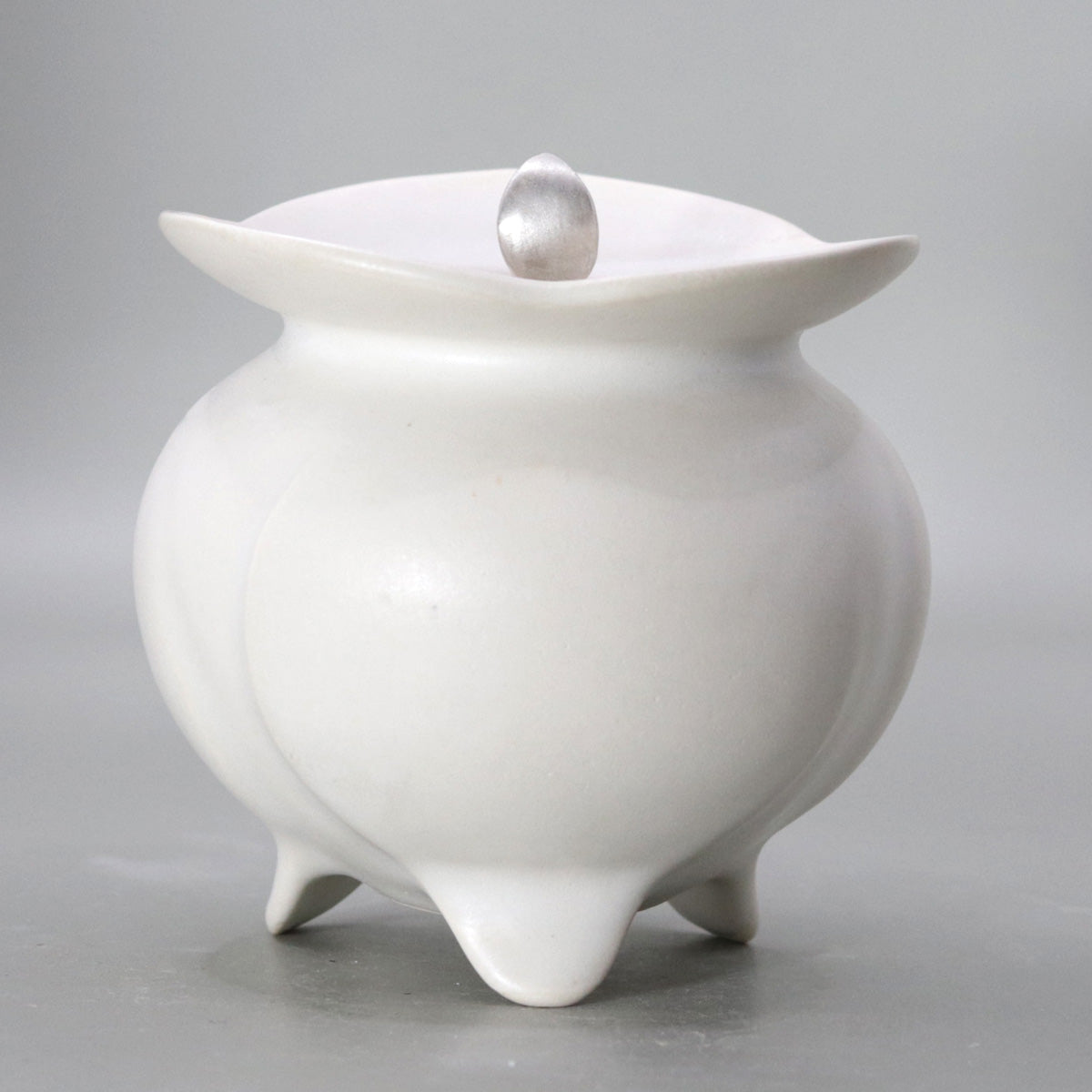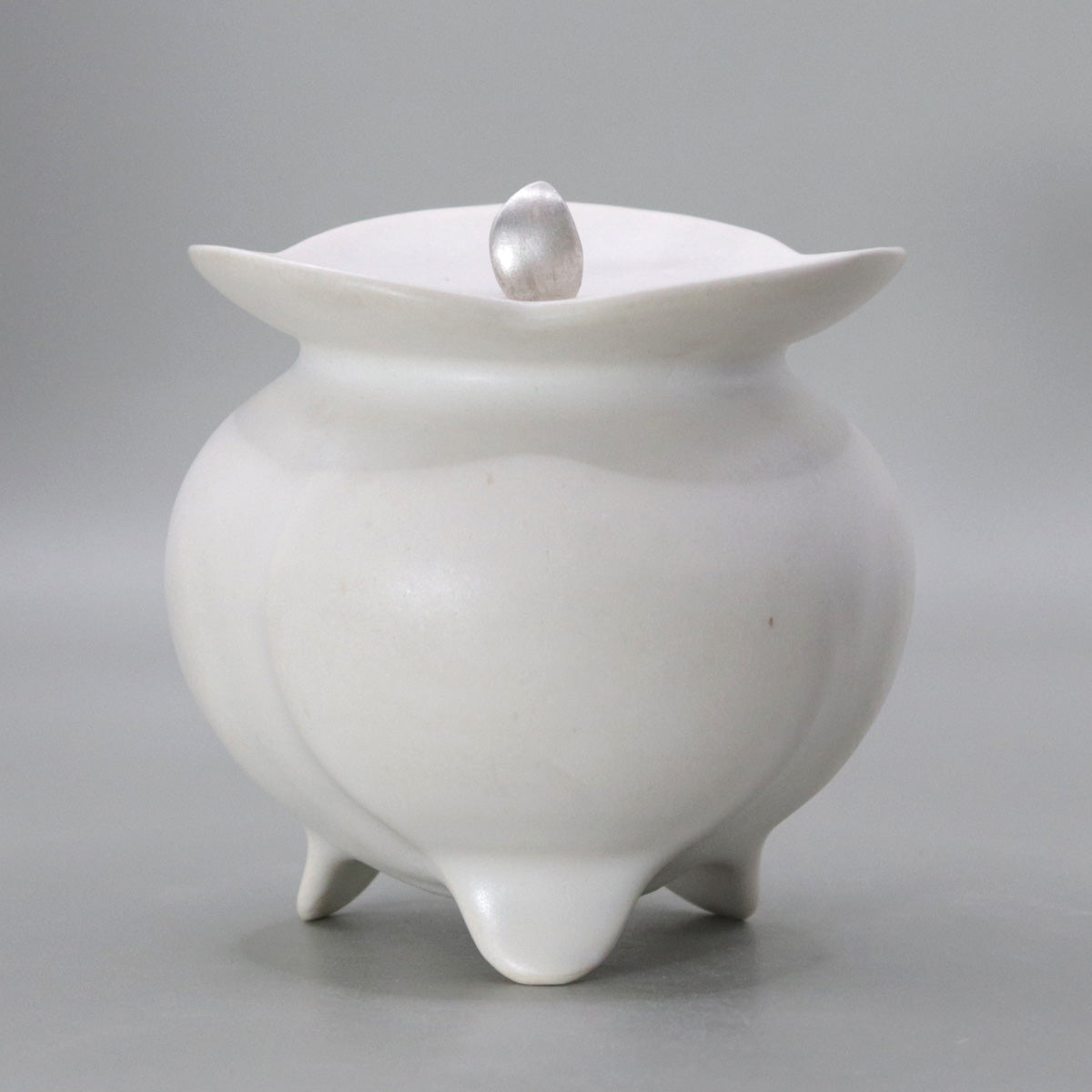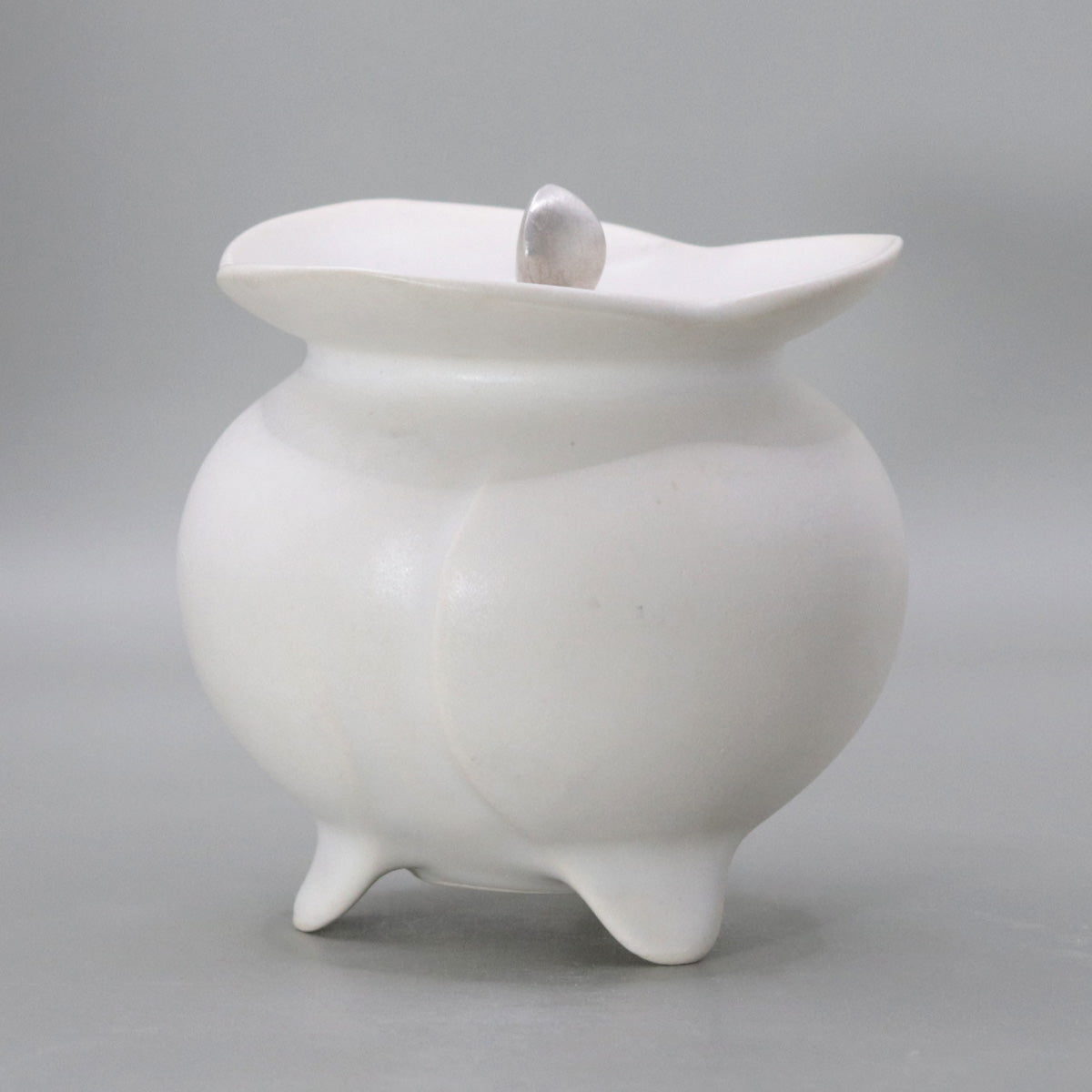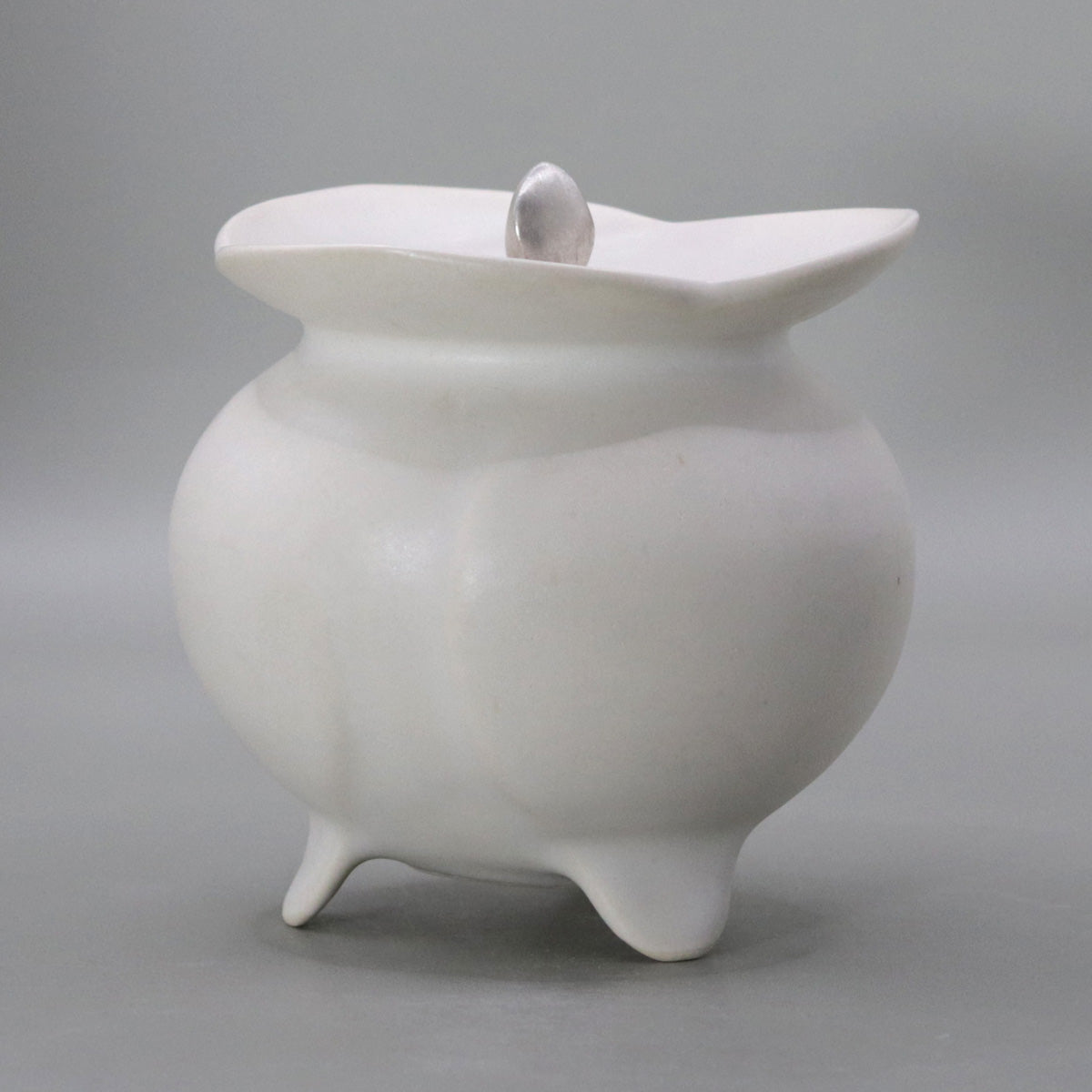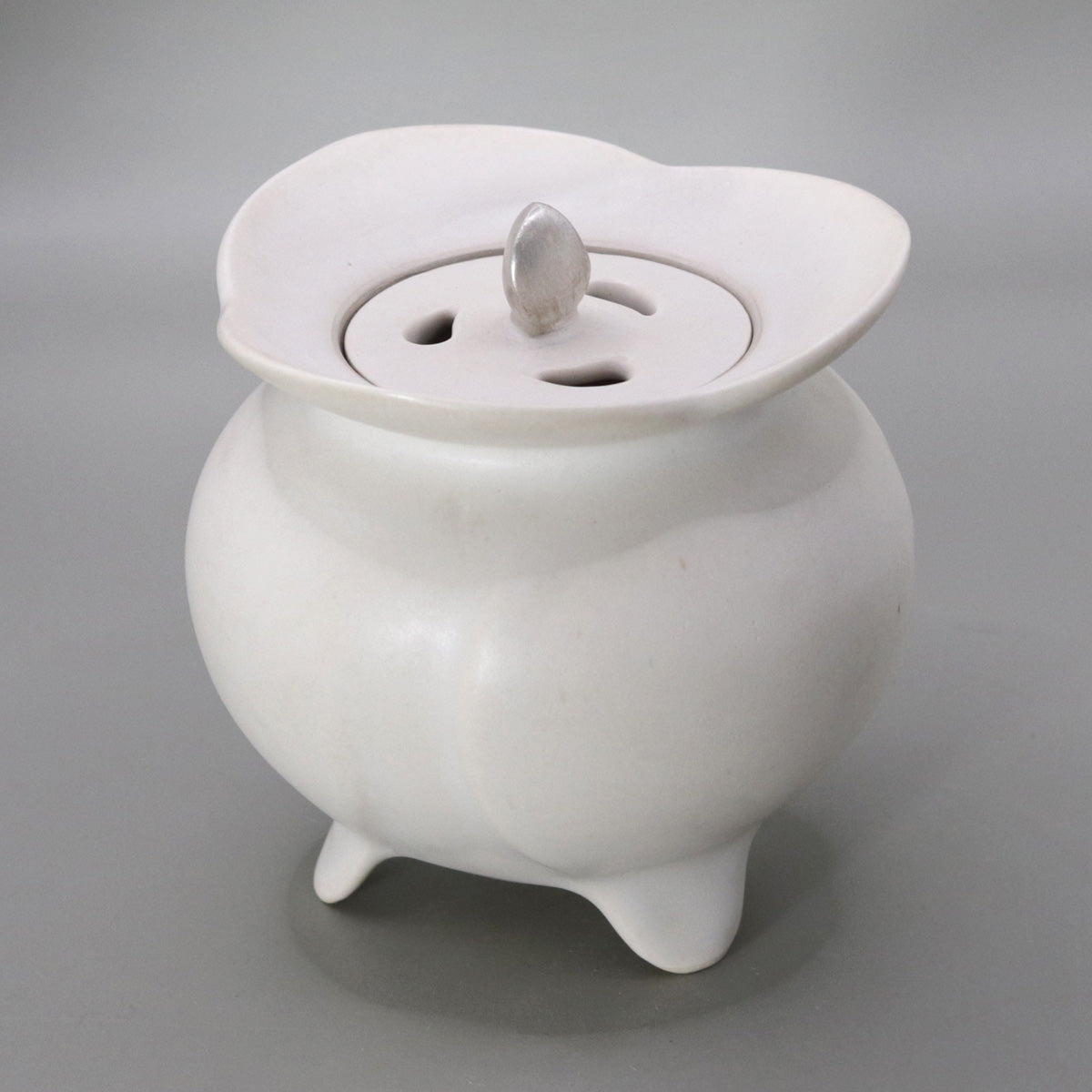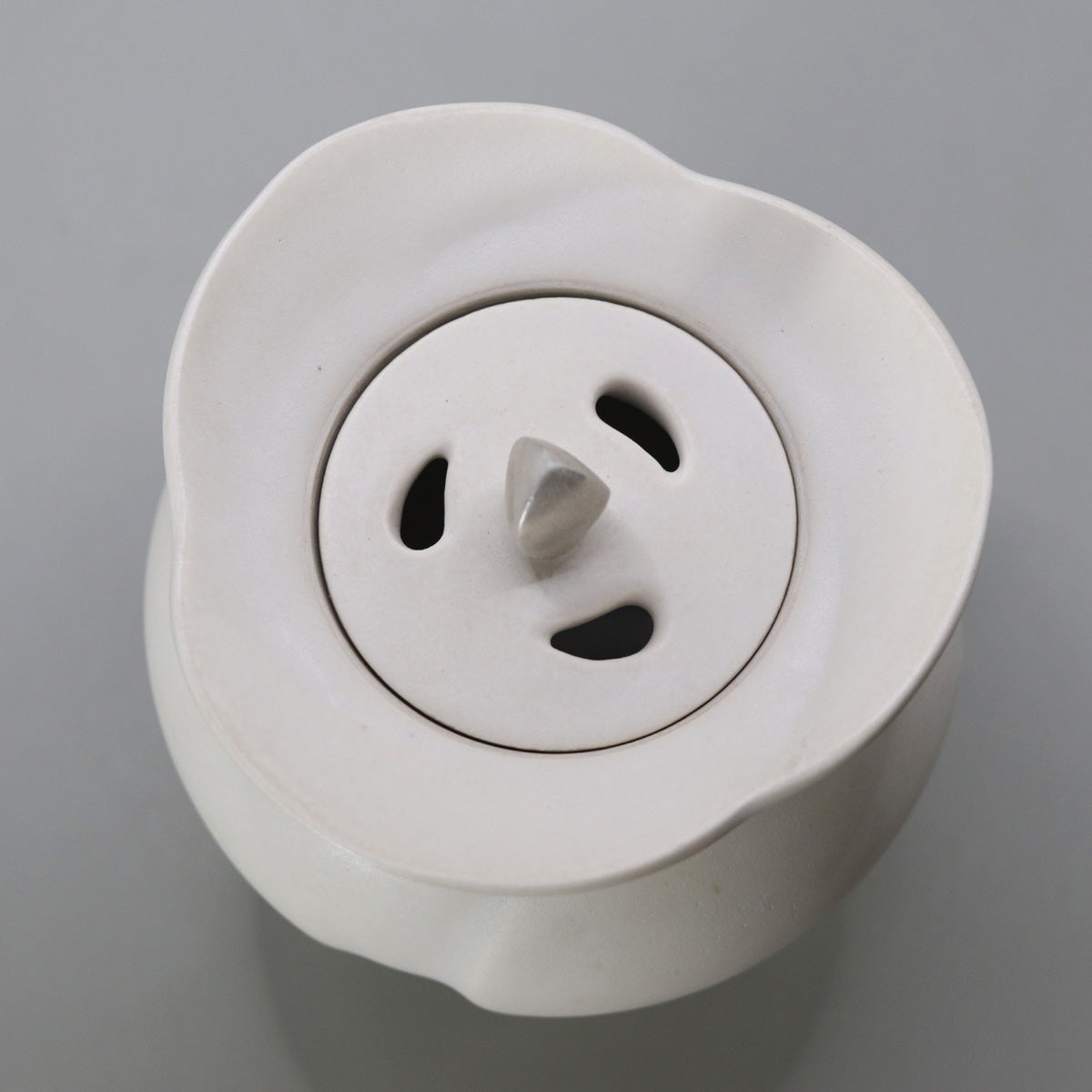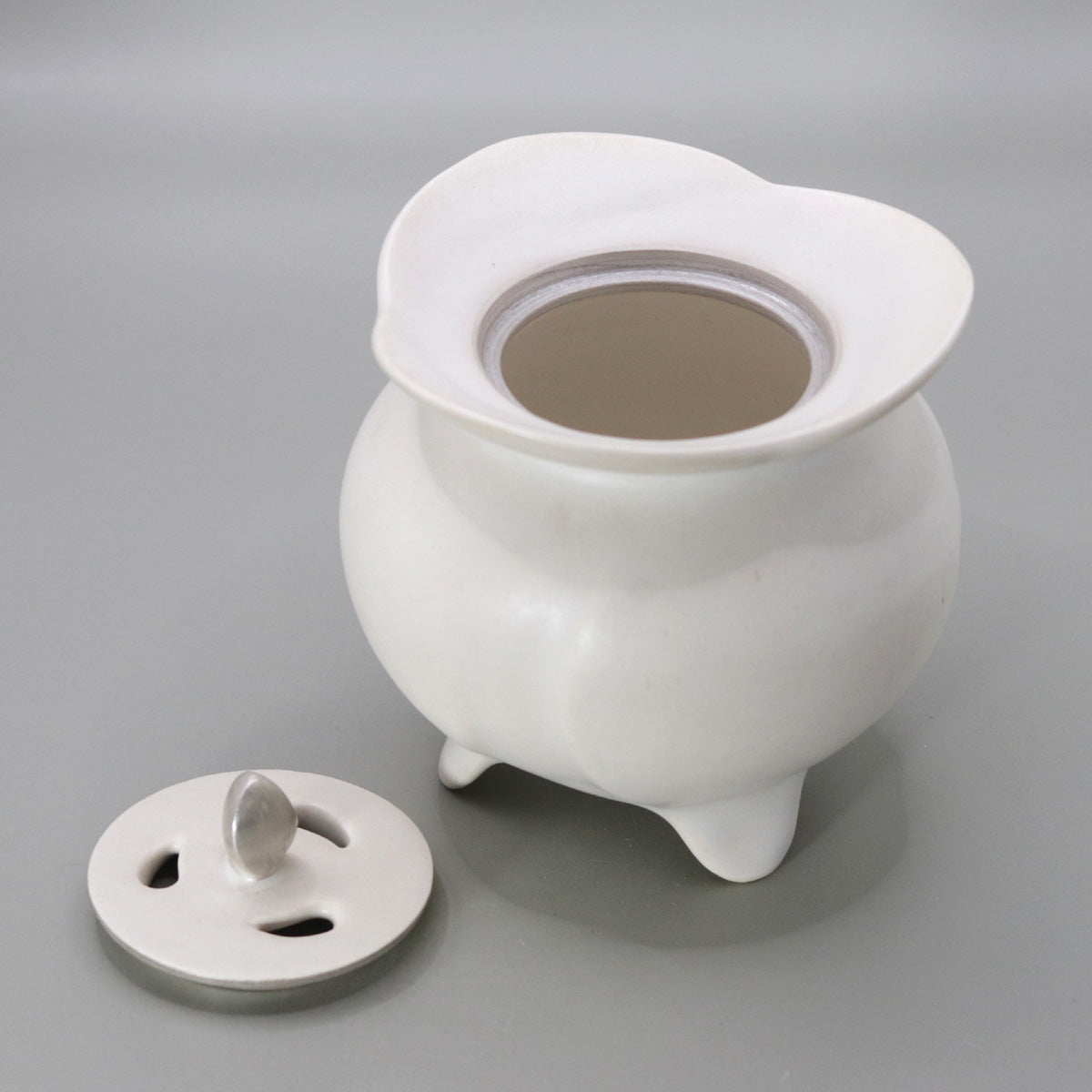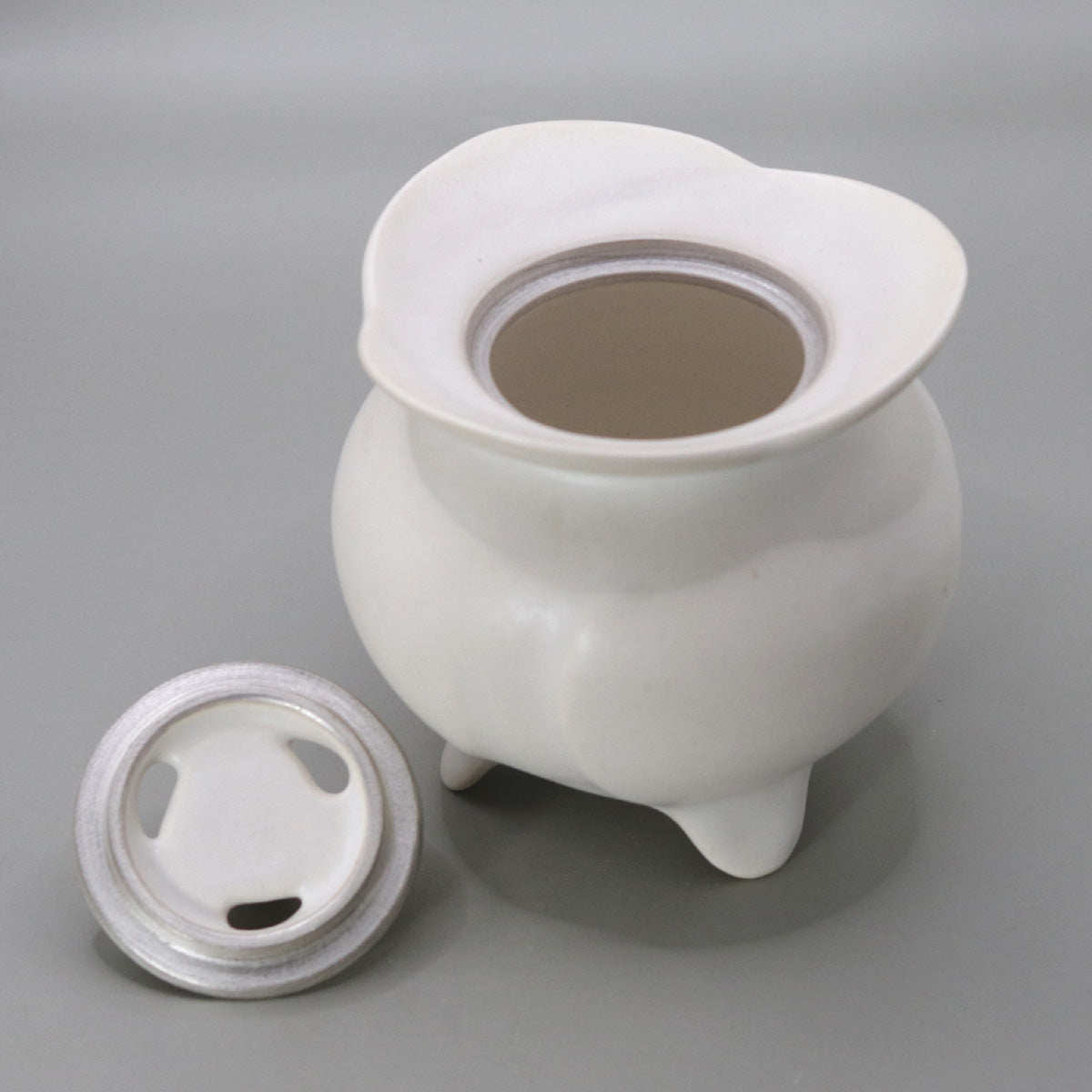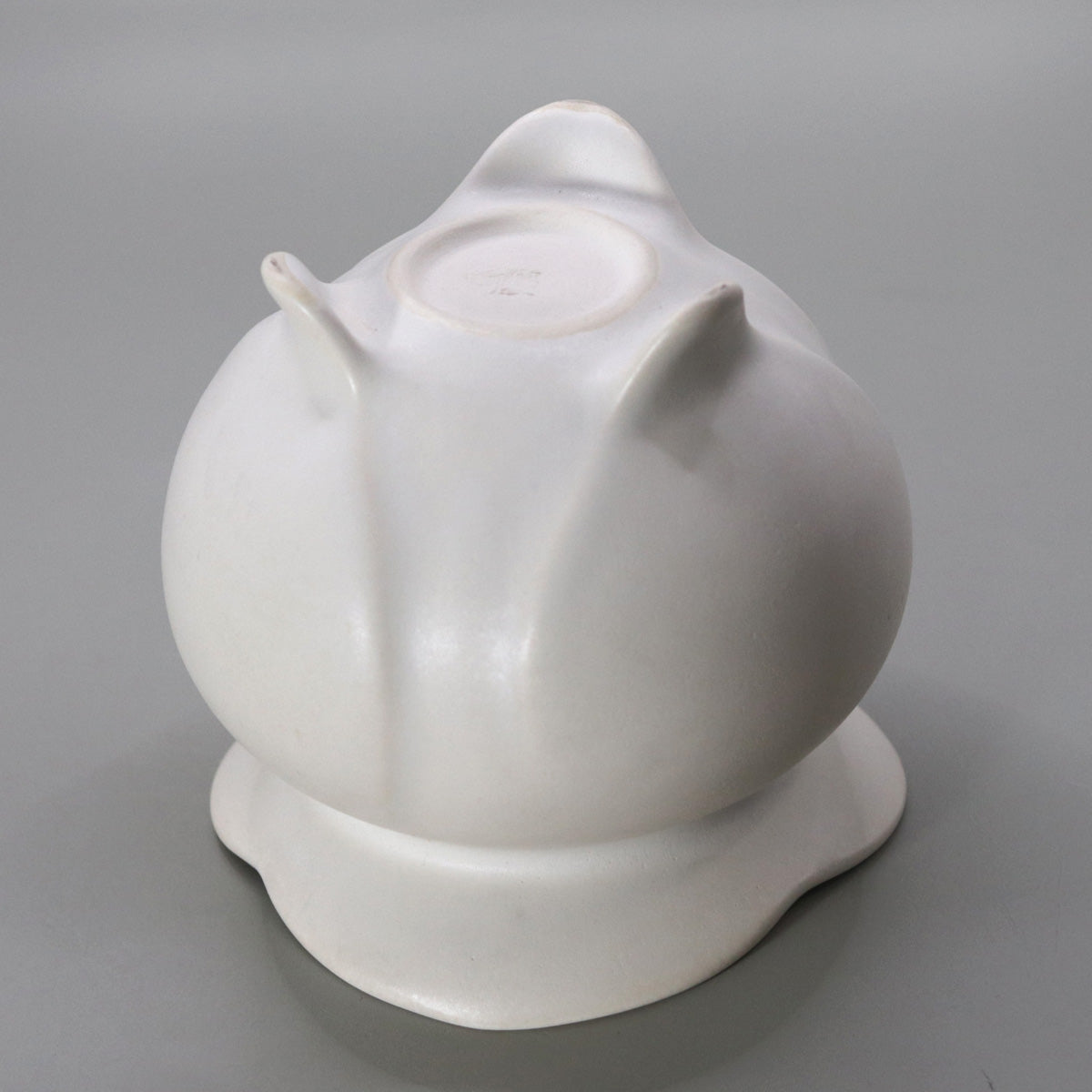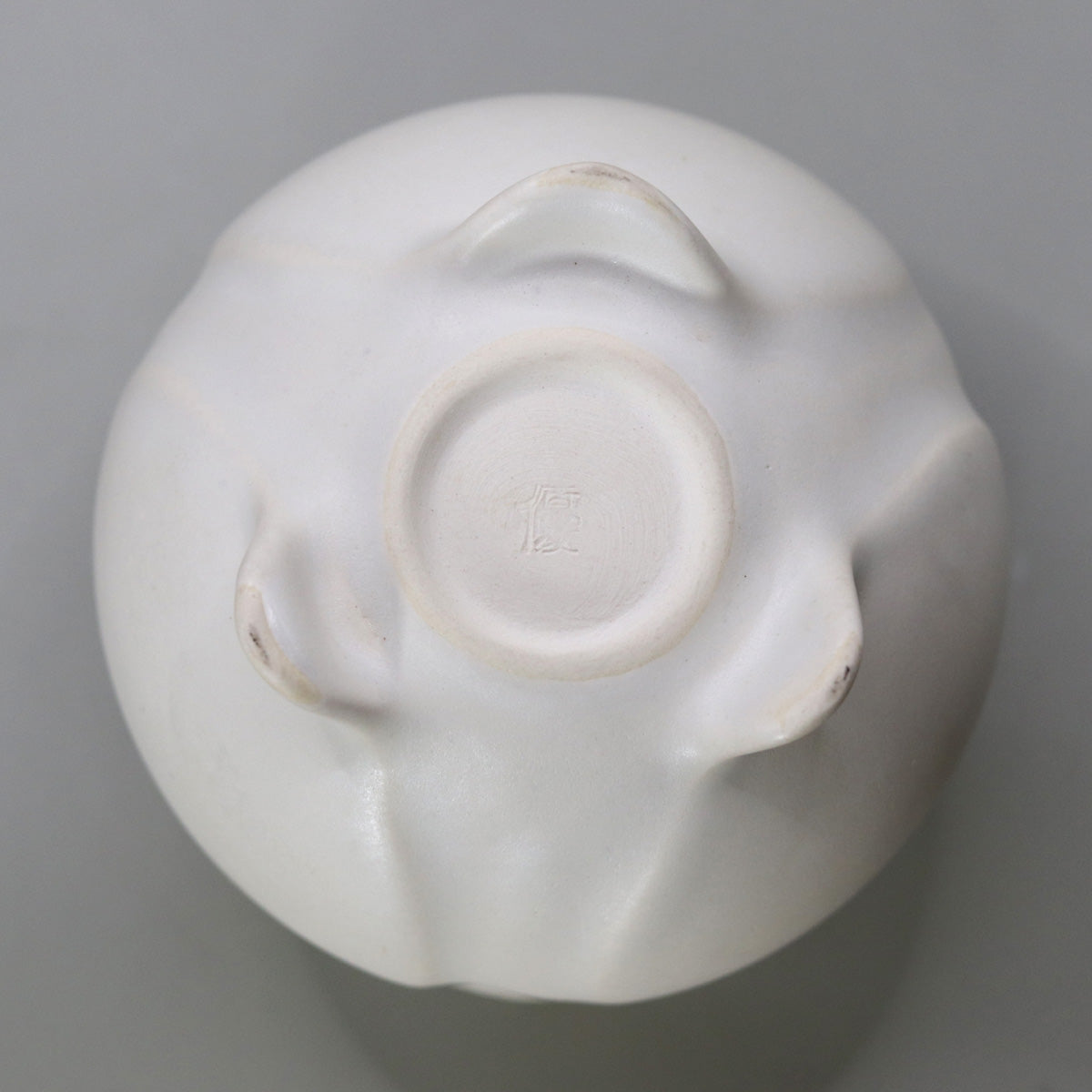White Glazed Ridge Incense Burner by Okada Yu
White Glazed Ridge Incense Burner by Okada Yu
Couldn't load pickup availability
Width: 11.6cm Height: 11.7cm
"White Glazed Ridgeline Incense Burner" by Masaru Okada - A lotus flower shape embracing the wind, a white that reflects tranquility
Okada Masaru's "White Glazed Ridge Incense Burner" is an impressive piece with an outwardly curved opening reminiscent of a lotus flower and a teardrop-shaped silver handle. The body, which stands out lightly on its three legs, is divided into four petals by very faint ridges, quietly reflecting the fluctuations of the air created by the incense smoke. In the following five chapters, covering history, technique, design, spirituality, and incense seating use , we will delve deeper into the aesthetics of this piece.
1. Historical Background - Lotus and Incense Burner Symbolism
Lotus design : The lotus is a symbol of purity in Pure Land Buddhism, and has been widely used since ancient times as a decoration for the lids of Buddhist altars and incense burners. This piece, with its curved rim reminiscent of a flower opening its petals, sublimates that tradition into a modern, minimalist form.
Lineage of the tripod incense burner : The tripod seen in the bronze ware "Kanae" and Chinese incense burners has been revered in tea houses and incense-storing venues as a design that combines stability and auspiciousness. By shaping the tripod into a teardrop shape, Masaru Okada expresses both antique style and gentleness at the same time.
2. Techniques and materials: Pure white texture and silver glaze
3. Deciphering the design: Lotus rim, four-petal body, teardrop-shaped knob
Lotus flower mouth (curved mouth)
By opening the rim horizontally outward, the incense smoke is dispersed horizontally in 360 degrees. Visually, it evokes the image of "petals floating on the surface of water," spreading tranquil ripples throughout the incense chamber.
Four-petal body and ridges <br data-end="991" data-start="988">Very shallow ridges divide the body into four petals, creating a rhythm of light and shadow. This is a minimalist, abstract modern design that is reminiscent of the diamond-shaped Tang dynasty censer.
Teardrop-shaped Silver Pick <br data-end="1079" data-start="1076">The silver glaze, modeled after a single drop of dew, adds a point of cool brilliance to the white porcelain and symbolically demonstrates the contrast between the different materials of metal and clay.
4. Spirituality - "White Space" and "Infinity of Fragrance"
White is the Zen symbol of "nothingness," and incense is the formless "something." Masaru Okada has combined the two to embody the paradox of "holding something in a vessel of nothingness."
Over time, the white glaze picks up small amounts of oil from the user's hands and perfume, giving it a deeper luster.
Silver picking is repeatedly oxidized and polished to develop a patina that ages with time.
In this way, the vessel undergoes subtle changes each time the incense is burned, and grows into a being that exudes the **"scent of time**.
summary
The White Glazed Ridgeline Incense Burner is an incense burner that combines the purity of a lotus, the ancient style of a tripod, and the modernity of silver drops .
The curved rim and four-petal body create the illusion of incense smoke flowing, the white glaze spaces reflect the seasons and light, and the silver handle marks the passage of time.
Whether placed in a teahouse, modern architecture, or minimalist art space, it will sharpen people's sensibilities as a "quiet focal point." — The pure white is colored by fragrance and time.
This philosophy quietly intersects with the hearts of its users, weaving a deep, lingering impression.
Share
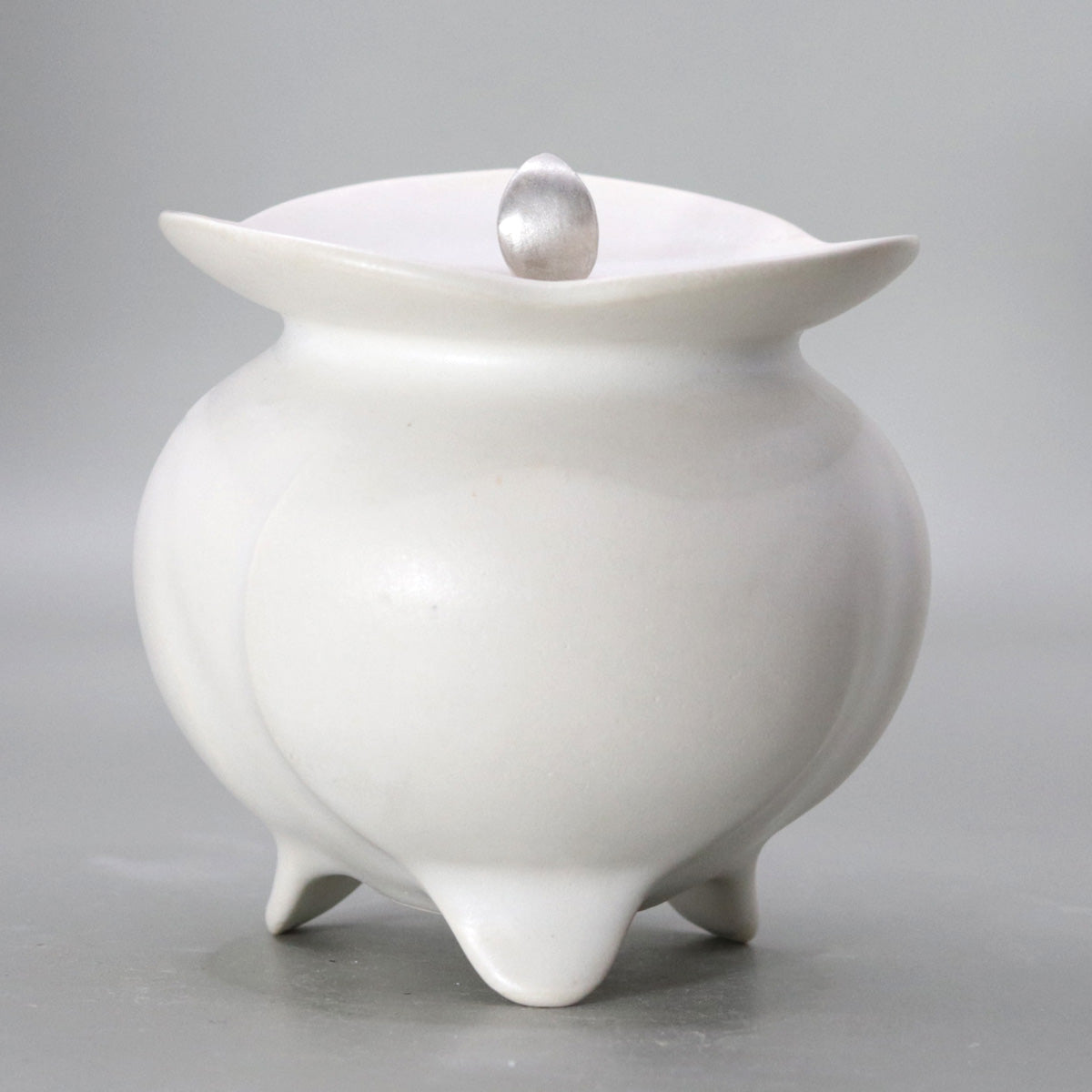
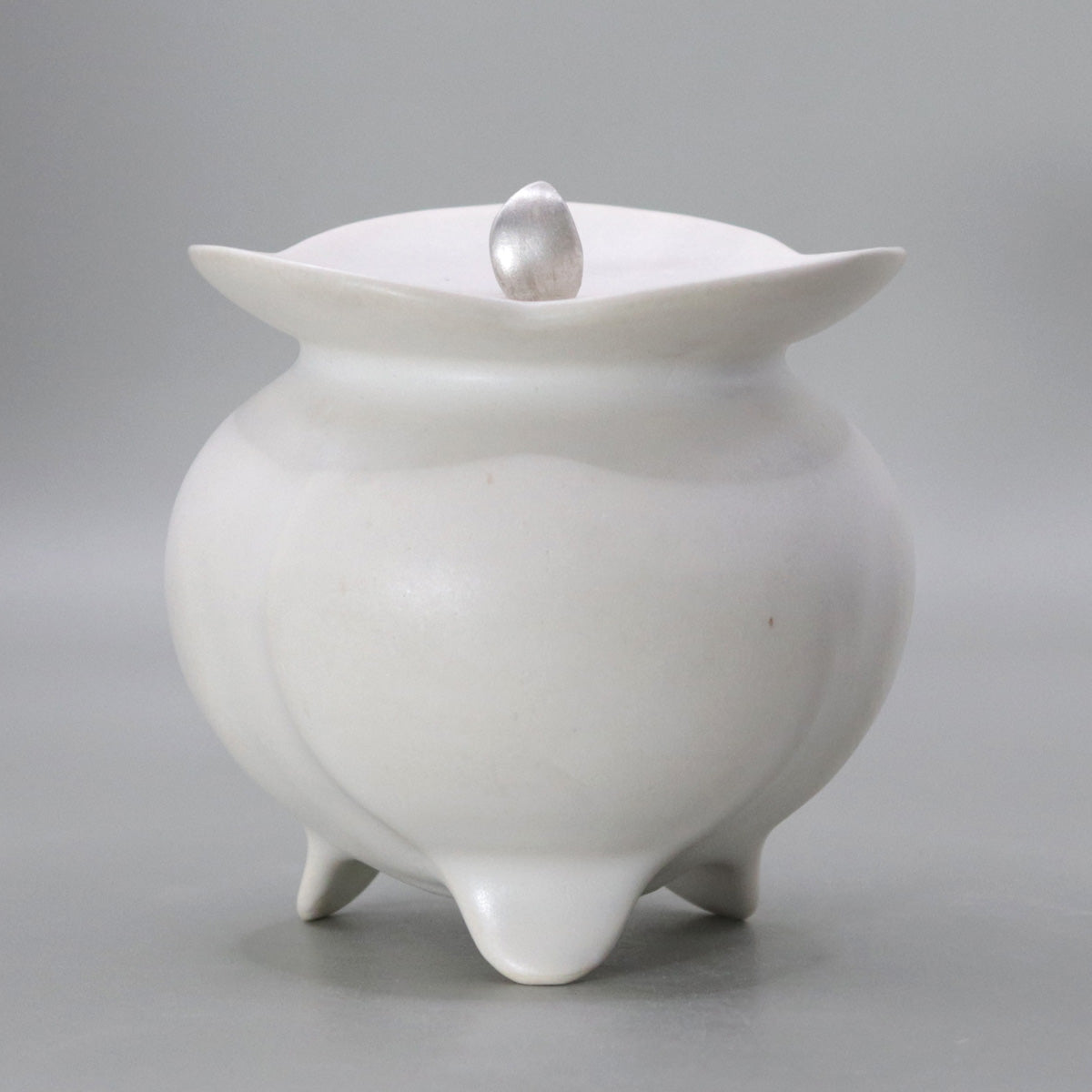
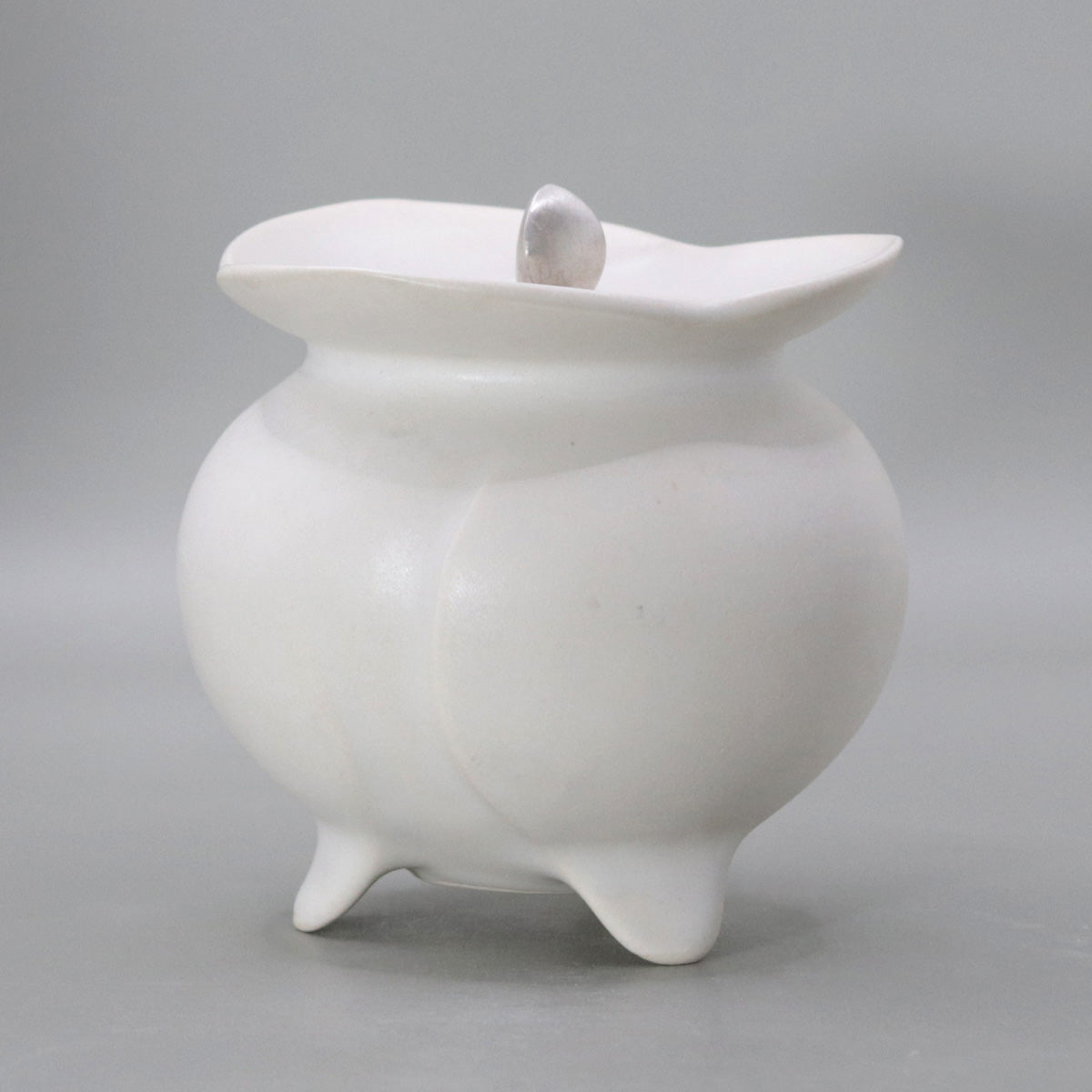
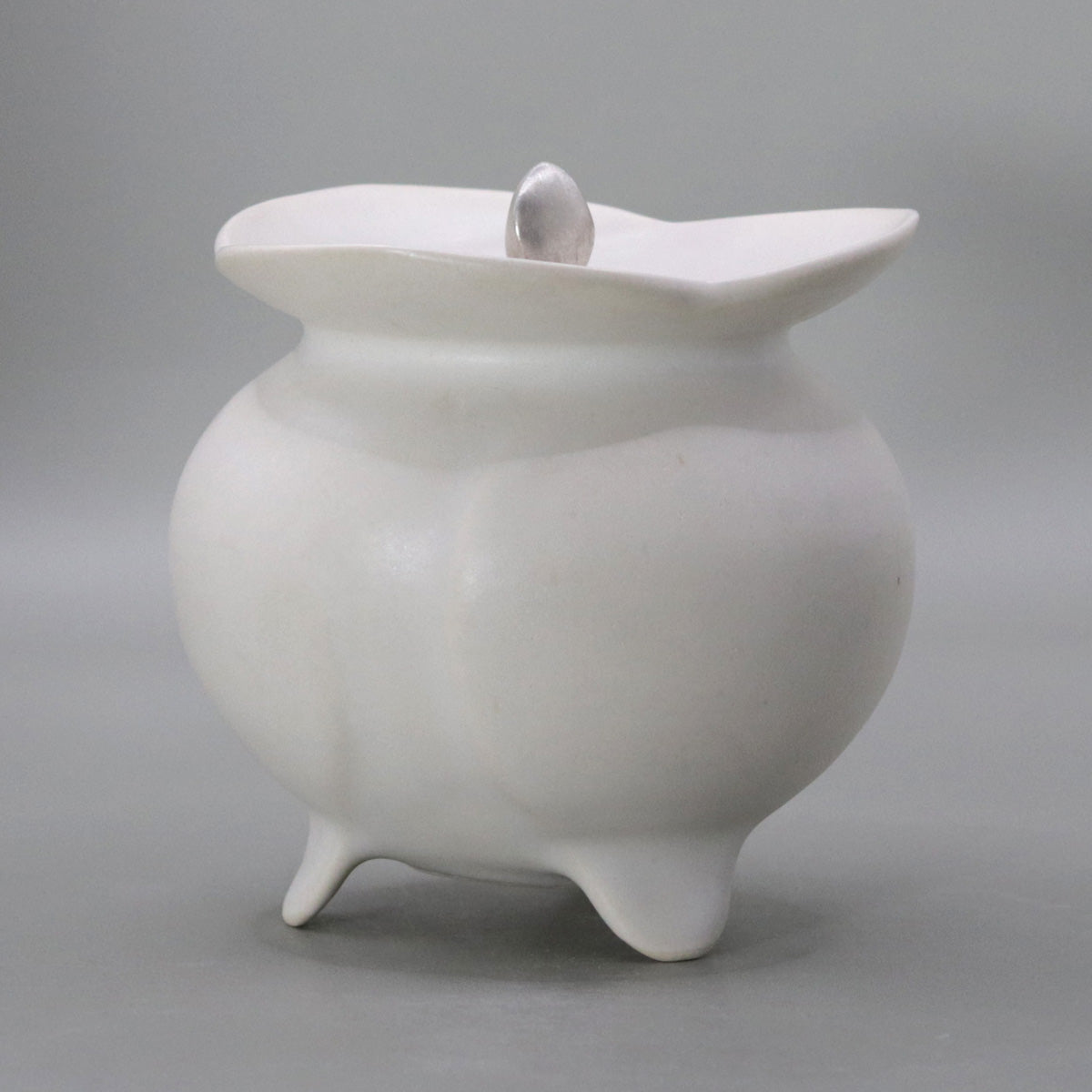
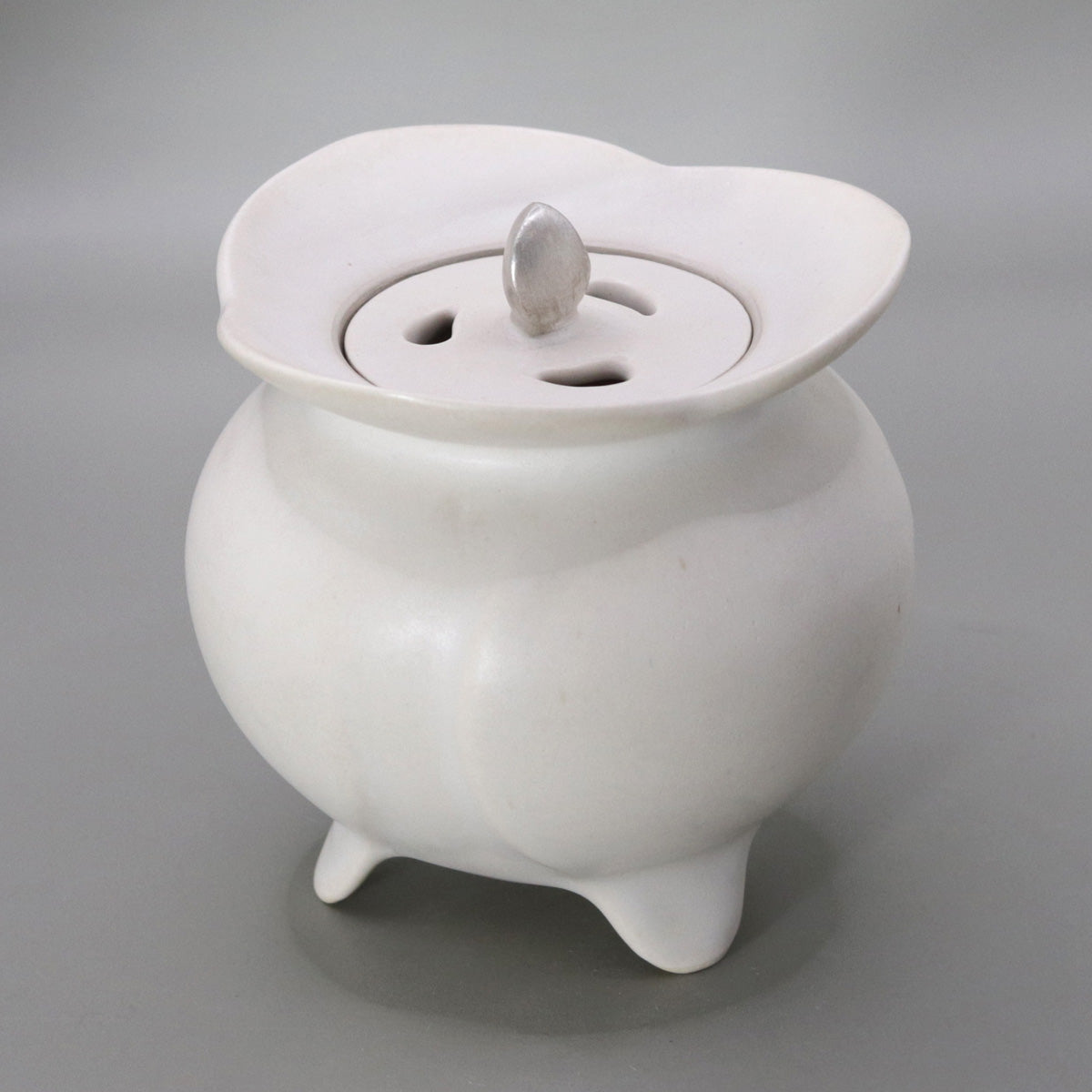
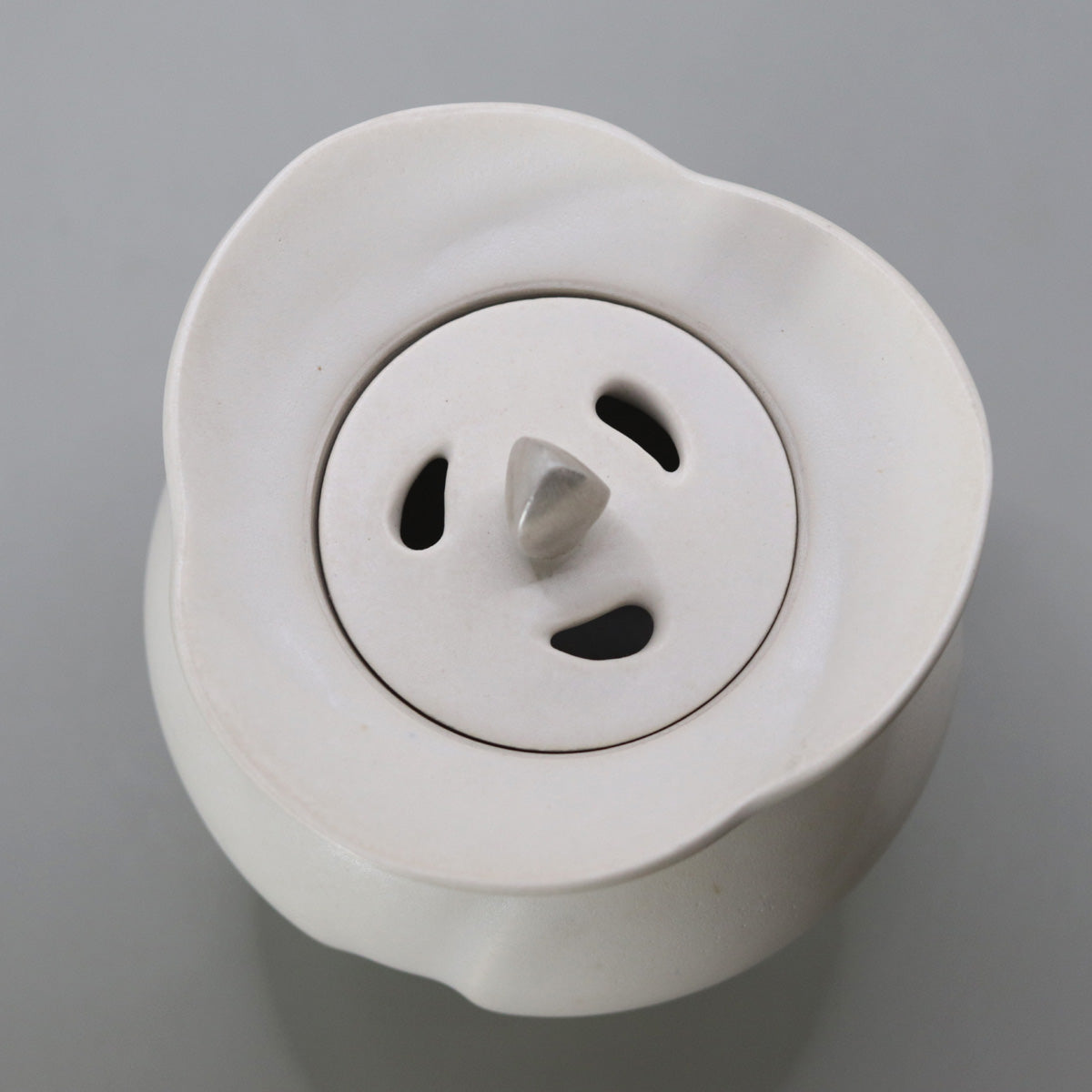
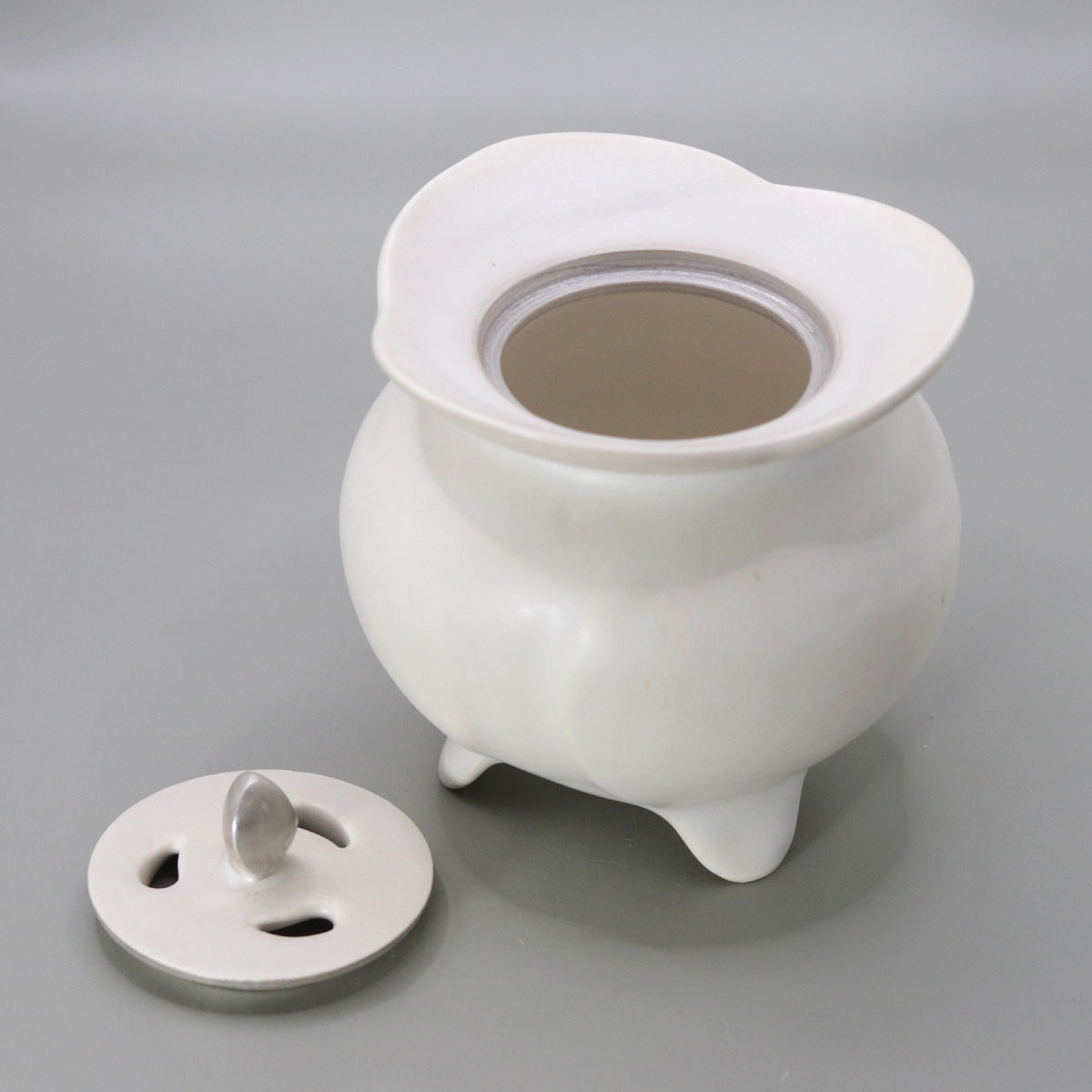
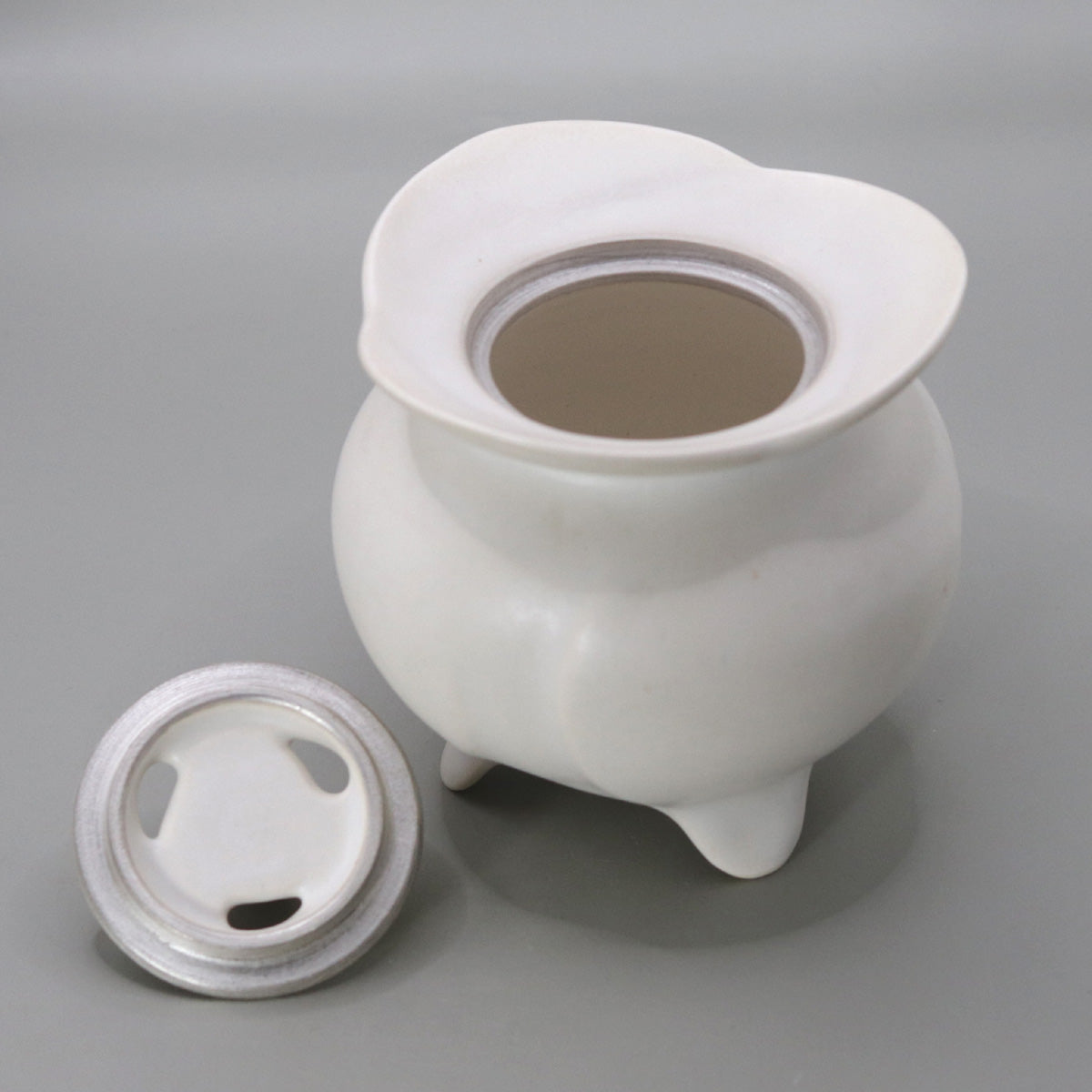
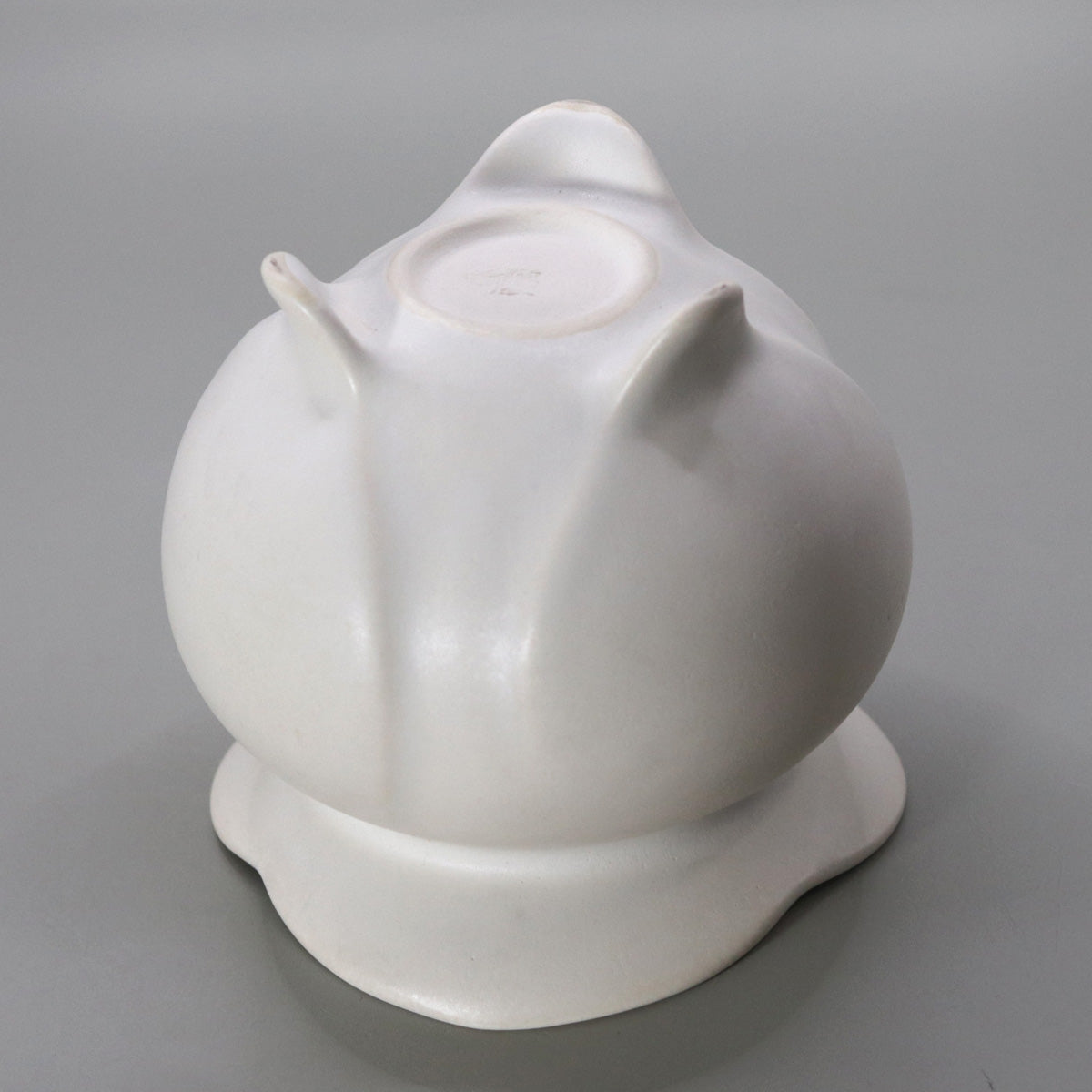
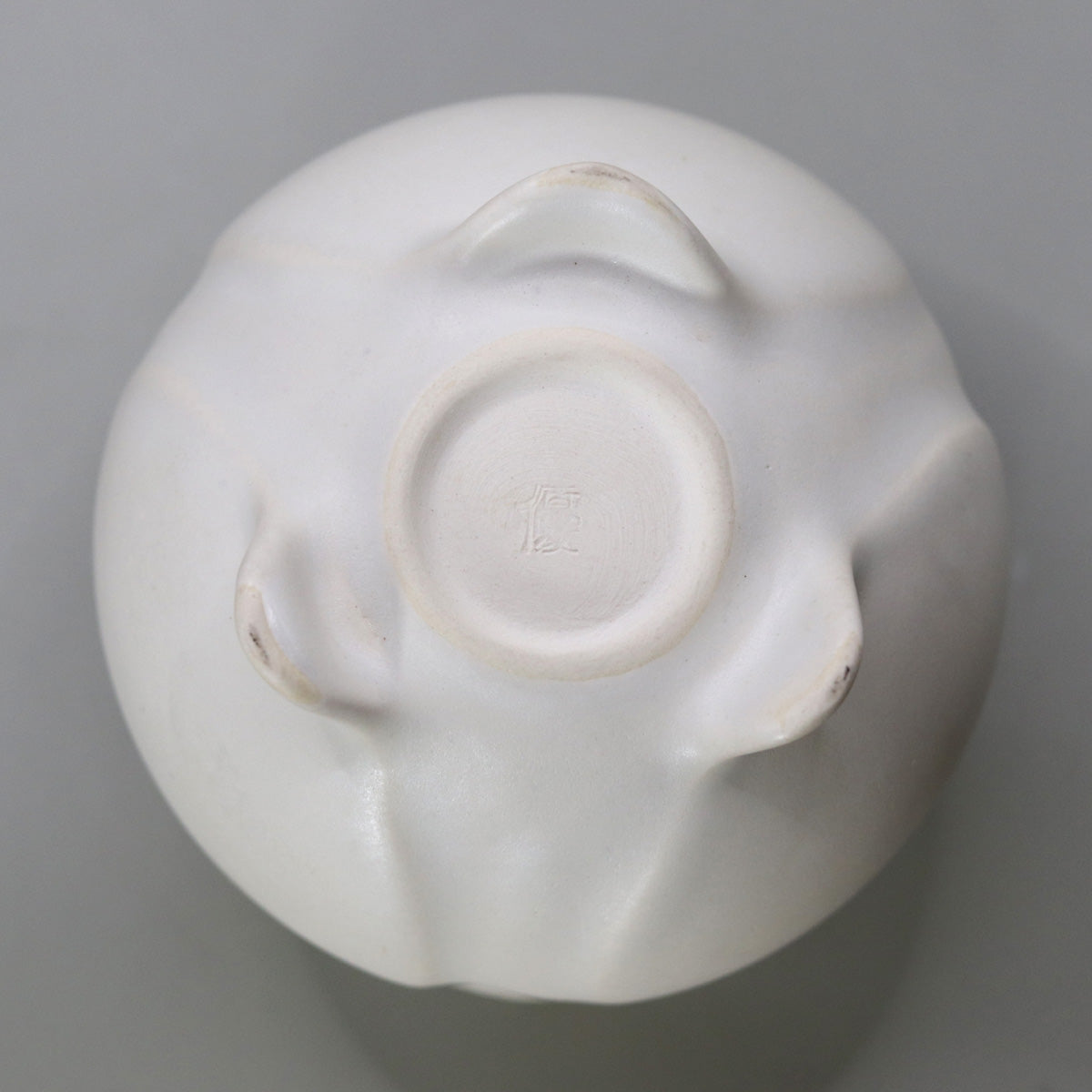
Multi-Column
-
[I will send it to you quickly and carefully]
We carefully package each product in a way that suits it best.
Also, delivery times vary depending on the piece (vessel, etc.).
Items that already come with a box will be shipped within 1-3 days of the order date.
For items that require a box to be made after your order, it will take approximately 30 days for production to be completed and then shipped.
In either case, once we have confirmed your order, we will contact you by email to inform you of the delivery date.
-
[Requests when purchasing pottery]
Even products that look the same may differ slightly in color, shape, size, etc.
The way the glaze is used, the power of the kiln, the firing method, the season, and the humidity also affect the appearance of the pottery.
Please understand the individuality of each piece of pottery and enjoy the unique warmth of handmade.

